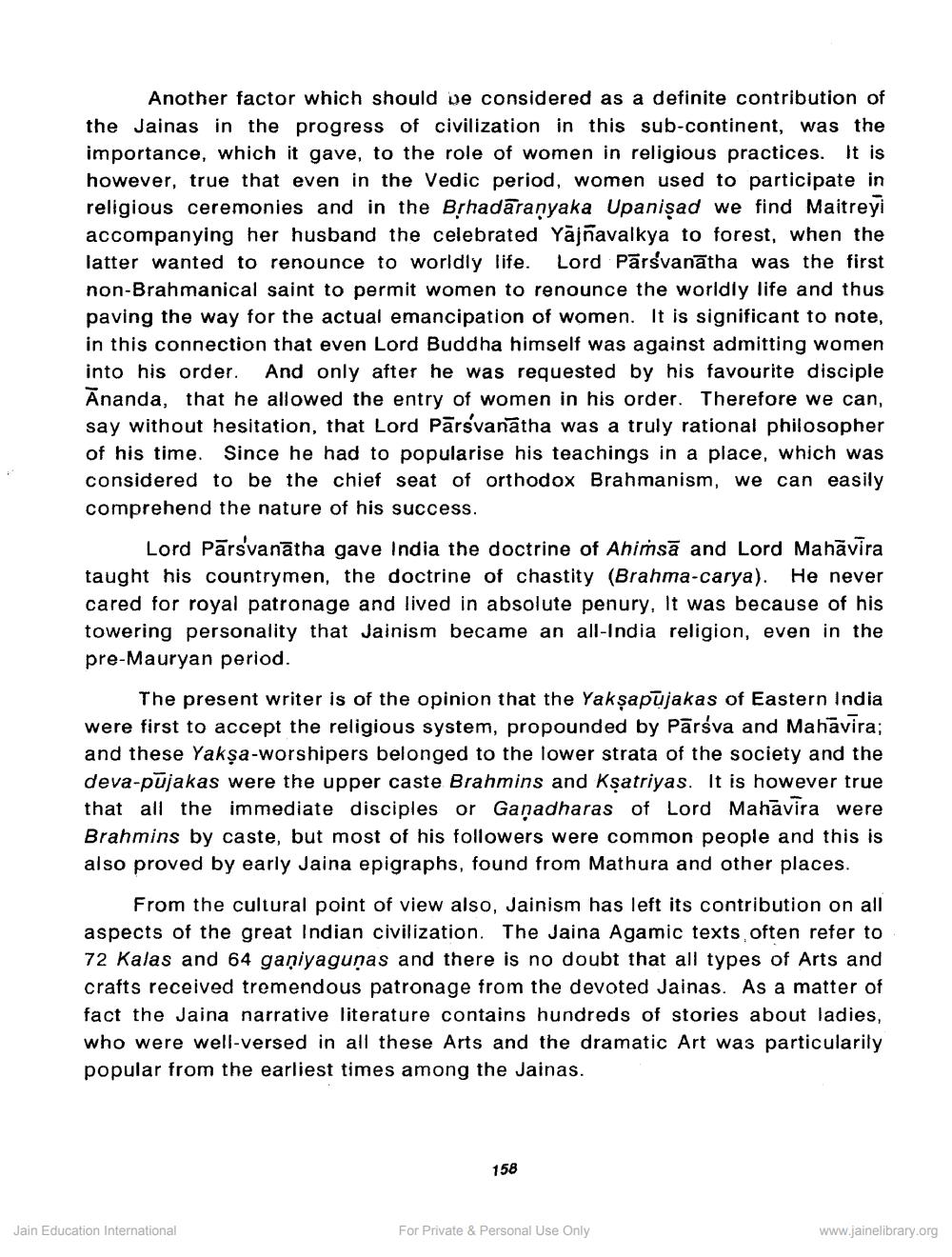________________
Another factor which should be considered as a definite contribution of the Jainas in the progress of civilization in this sub-continent, was the importance, which it gave, to the role of women in religious practices. It is however, true that even in the Vedic period, women used to participate in religious ceremonies and in the Brhadaranyaka Upanişad we find Maitreyi accompanying her husband the celebrated Yajnavalkya to forest, when the latter wanted to renounce to worldly life. Lord Pārsvanātha was the first non-Brahmanical saint to permit women to renounce the worldly life and thus paving the way for the actual emancipation of women. It is significant to note, in this connection that even Lord Buddha himself was against admitting women into his order. And only after he was requested by his favourite disciple Ananda, that he allowed the entry of women in his order. Therefore we can, say without hesitation, that Lord Pārsvanatha was a truly rational philosopher of his time. Since he had to popularise his teachings in a place, which was considered to be the chief seat of orthodox Brahmanism, we can easily comprehend the nature of his success.
Lord Pārsvanātha gave India the doctrine of Animsā and Lord Mahavira taught his countrymen, the doctrine of chastity (Brahma-carya). He never cared for royal patronage and lived in absolute penury, It was because of his towering personality that Jainism became an all-India religion, even in the pre-Mauryan period.
The present writer is of the opinion that the Yakşapujakas of Eastern India were first to accept the religious system, propounded by Pārsva and Mahāvira; and these Yakşa-worshipers belonged to the lower strata of the society and the deva-pujakas were the upper caste Brahmins and Ksatriyas. It is however true that all the immediate disciples or Ganadharas of Lord Mahavira were Brahmins by caste, but most of his followers were common people and this is also proved by early Jaina epigraphs, found from Mathura and other places.
From the cultural point of view also, Jainism has left its contribution on all aspects of the great Indian civilization. The Jaina Agamic texts often refer to 72 Kalas and 64 ganiyagunas and there is no doubt that all types of Arts and crafts received tremendous patronage from the devoted Jainas. As a matter of fact the Jaina narrative literature contains hundreds of stories about ladies, who were well-versed in all these Arts and the dramatic Art was particularily popular from the earliest times among the Jainas.
158
Jain Education International
For Private & Personal Use Only
www.jainelibrary.org




